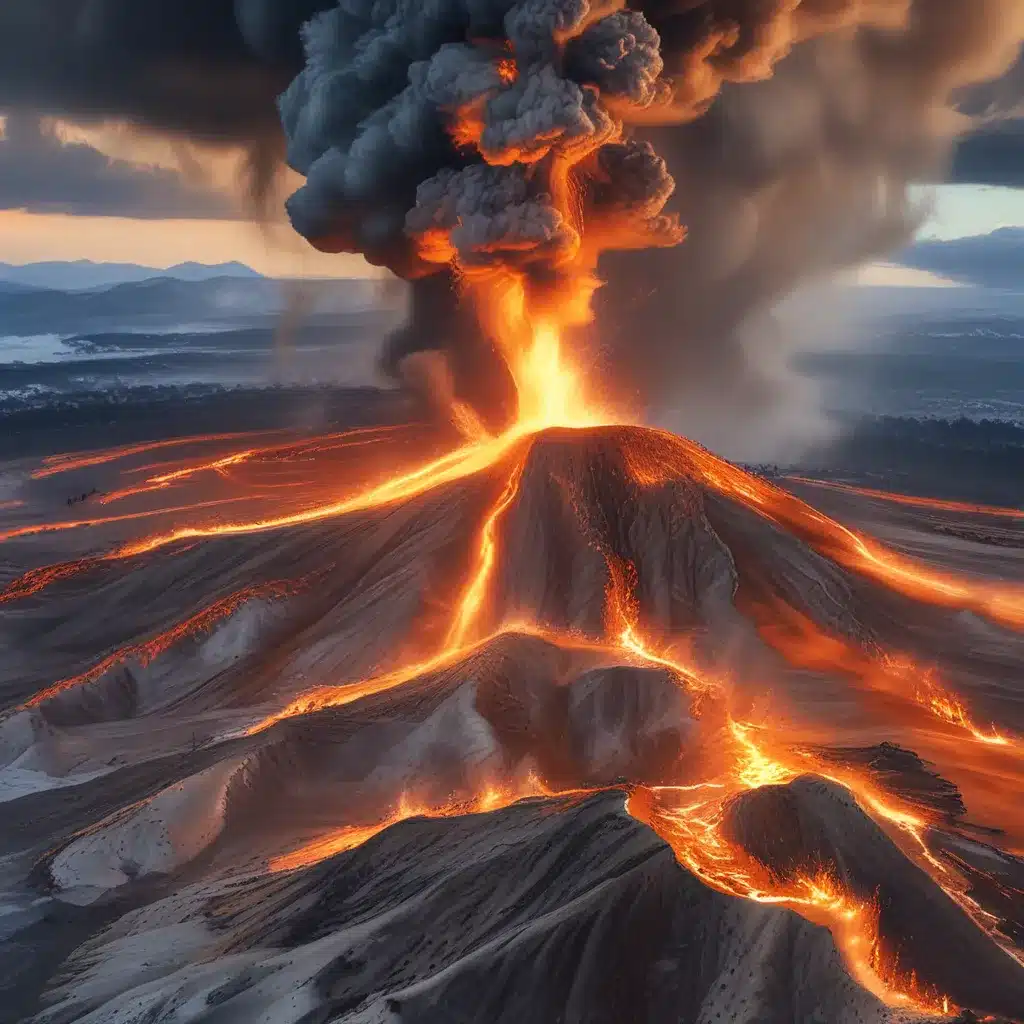The Ticking Time Bomb Beneath Our Feet
Picture this: You’re enjoying a nice, peaceful afternoon in Yellowstone National Park, marveling at the glistening geysers and serene hot springs that dot the landscape. Little do you know, a catastrophic threat is quietly brewing beneath your feet – a supervolcano that could bring civilization as we know it to its knees.
It may sound like the plot of a Hollywood disaster movie, but this is the sobering reality that scientists at NASA are grappling with. As a member of the NASA Advisory Council on Planetary Defense, I can attest that the supervolcano threat is significantly greater than the risks posed by asteroids or comets. In fact, NASA estimates that a major supervolcano eruption could lead to a prolonged “volcanic winter” that would make it impossible for the world’s current population to be adequately fed.
The good news? NASA believes they have a plan to avert this looming disaster – and it involves harnessing the power of technology.
Taming the Beast: NASA’s Audacious Plan
Lying beneath the serene landscapes of Yellowstone National Park is an enormous magma chamber, a veritable “heat generator” the size of six industrial power plants. As this heat builds up over time, it enables the magma to dissolve more and more volatile gases and surrounding rocks. Once it reaches a critical threshold, an explosive eruption becomes inevitable.
But what if we could find a way to siphon off this heat before it reaches that point? According to NASA, the key may be to “drill down” into the supervolcano and pump water at high pressure into the magma chamber. As the circulating water returns to the surface at scorching temperatures of around 350°C (662°F), it would slowly but surely extract heat from the volcano, eventually rendering it harmless.
NASA estimates that a 35% increase in heat transfer from Yellowstone’s magma chamber could be enough to eliminate the threat of an eruption. And as an added bonus, the extracted heat could be harnessed to generate electricity at extremely competitive prices – a prospect that could help convince skeptical politicians to greenlight this ambitious project.
Of course, drilling into a supervolcano is no small feat, and it doesn’t come without risks. The team at NASA is adamant that the utmost care must be taken to “do no harm” – drilling in from the sides instead of the top, for example, to prevent triggering the very eruption they’re trying to prevent. It’s a delicate balancing act, but one they believe is worth the risk.
The Long Game: Thinking on a Geologic Timescale
One of the most daunting aspects of this plan is the sheer timescale involved. Cooling Yellowstone’s magma chamber to the point where it no longer poses a threat would take tens of thousands of years – a timeline that far exceeds the lifespan of any individual involved in the project.
As Brian Wilcox of NASA’s Jet Propulsion Laboratory puts it, “You’d start the process, and the main ongoing benefit you’d see in everyday terms is this new supply of electrical power.” In other words, the people who initiate this project may never see it through to completion or even have a clear idea of whether it’s working.
This kind of long-term thinking and planning is precisely what’s needed to tackle a threat as monumental as a supervolcano eruption. It’s a sobering reality, but one that the team at NASA is determined to confront head-on.
A Global Effort to Avert Disaster
It’s worth noting that Yellowstone is not the only supervolcano on the planet. In fact, NASA estimates that there are around 20 known supervolcanoes worldwide, with major eruptions occurring on average once every 100,000 years.
That’s why the team at NASA is hoping that their blueprints for the Yellowstone project will inspire similar efforts to tackle the threat posed by other supervolcanoes around the globe. It’s a daunting challenge, to be sure, but one that they believe is essential for the long-term survival of our species.
As Wilcox notes, “When people first considered the idea of defending the Earth from an asteroid impact, they reacted in a similar way to the supervolcano threat. But it turns out that if you engineer something which pushes very slightly for a very long time, you can make a big difference.”
The Vital Role of IT Services
At ItFix, we firmly believe that technology will play a crucial role in humanity’s efforts to confront the threat of supervolcano eruptions. From the complex simulations and modeling required to understand the behavior of these geologic behemoths to the advanced drilling and heat extraction systems needed to tame them, IT services will be indispensable.
Our team of seasoned IT professionals is well-equipped to support the kind of long-term, large-scale projects that NASA has in mind. From developing custom software solutions to managing the vast amounts of data generated by these initiatives, we have the expertise and resources to help turn these ambitious plans into reality.
But more than that, we’re driven by a deep sense of responsibility to our planet and its people. The thought of a supervolcano eruption wiping out entire civilizations is a sobering one, and it’s a threat that we’re committed to helping overcome.
So, if you’re a scientist, policymaker, or anyone else who’s passionate about safeguarding our world from this catastrophic threat, we’re here to help. Let’s work together to build a future where supervolcanoes are nothing more than a footnote in the history books.













